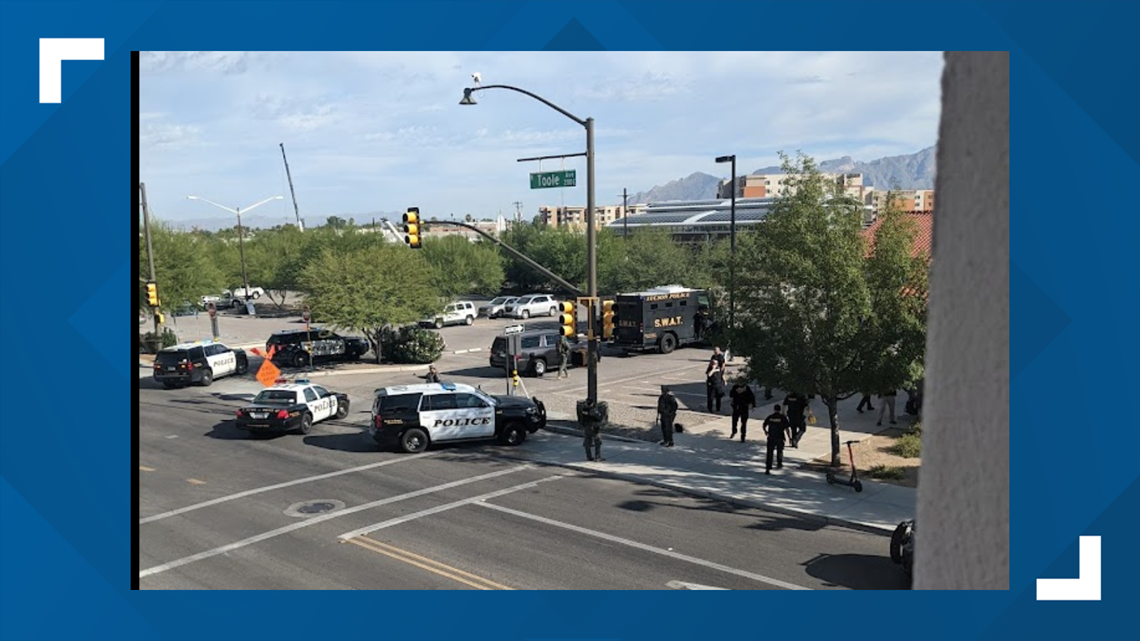[ad_1]
TUCSON, Arizona – On a hot August desert morning, a festive trumpet and guitarrón bass breaks the solemn silence of mass. Nine musicians in gold-embroidered suits play, jingle and trumpet the entrance hymn under tall stained glass windows.
After more than a year of silence due to the pandemic, mariachis are again playing Sunday services at St. Augustine Cathedral in Tucson, where the colorful and sonorous tradition goes back half a century and combines Roman Catholicism with Mexican-American pride.
For the hundreds of believers gathered in this colonial Spanish church and other congregations to the southwest, the unique sound of the mariachi liturgy is more than just another version of choir. It is reminiscent of a borderland identity where spirituality and folk music have blended for centuries.
“Syncretism is the reality of this country, the ‘subscription’ reality,” said Rev. Alan Valencia, the rector of the cathedral, who grew up with the mariachi mass in “ambos nogales” or “both nogales” as the locals call it two cities of the same name, which extend about 100 kilometers south of the American-Mexican border.
“And that’s what we see in these mariachi fairs,” he added. “Faith and culture come together and grow.”
Mariachi forms the soundtrack to daily life here in the border areas and accompanies everything from barbecues in the garden to quinceanera coming-of-age parties to weddings and funerals.
Although mariachi is a popular genre at its core, musicians and parishioners alike say that the emotional interplay of trumpet, violin, guitar, vihuela, and guitarrón is a natural complement to the sacred rites of mass.
“The mass itself is a reminder that in a cantina you don’t just have mariachis at the table,” says Alberto Ranjel, who has been playing in the cathedral since he was nine and now directs the Mariachi Tapatio ensemble that his father founded. “It’s a representation of my culture.”
The worshiper Leilani Gomez repeated this feeling and said, “You are bringing culture and art into mass with the presence of God. They let you feel the presence of God. “
The first canon of the mariachi mass was composed in Cuernavaca, Mexico, after the Vatican encouraged the incorporation of regional musical traditions into services in the 1960s. Called the Misa Panamericana or Pan American Mass, it features a specific sequence of instrumental arrangements, sung prayers, and hymns, according to Dan Sheehy, director and curator of Smithsonian Folkways Recordings.
It was around this time that the Chicano civil rights movement was flourishing in the United States, and mariachi musicians went from folk troubadouring to cultural heroes, “symbols of Mexican identity that have been reinforced here because of multiculturalism,” Sheehy added.
Hundreds of mariachi school programs followed in the 1970s when the music was written down rather than taught through lyric training, said George Bejarano, who started playing with the youth group Los Changuitos Feos, or “The Ugly Little Monkeys,” in 1973. and whose family has lived in the border areas “since before there were borders”. Female musicians also began to join the traditionally male ensembles.
The main pillars of the mariachi mass include the cheerful “Pescador de Hombres” or “Männerfischer” – the Spanish-speaking counterpart to “Amazing Grace” because of its popularity and ubiquity – and an exciting interpretation of Franz Schubert’s classic from the 19th Ave Maria. “
When it is performed in the cathedral, Ranjel turns to a painting of the Virgin of Guadalupe, the patron saint of Mexico and America, and intones the Latin version of the text.
“I respect the prayer aspect by singing it in Latin,” he said.
Four ensembles take turns performing the Spanish-language mass at 8 a.m. every Sunday of the month in the cathedral in central Tucson. All volunteers typically spend at least two hours a week rehearsing and on the day of the show they get up before sunrise to prepare their Trajes de Charro, ornately decorated suits that originated in Mexico and are often worn by mariachi groups.
For musicians like Daniel Rodriguez, the director of Mariachi Herencia de Cuco Del Cid, who have been a fixture in the cathedral and also in the Church of the Holy Trinity in the north-west of the city for 20 years, performing is a way of giving something back to the community .
“When you sing or music is offered to God, it’s like praying, but it’s more powerful,” said Rodriguez. “It’s really powerful for us to be a driving force through our music, to inspire people to come back and stay at the fair.”
On September 18, Los Changuitos will perform at a special fair in honor of the victims of the coronavirus pandemic that killed nearly 2,500 people in Tucson’s Pima County and silenced mariachi services from spring 2020 until resuming late last month became.
On a recent Sunday, the show continued after mass, with musicians serenading believers in the palm-lined courtyard in front of the cathedral. People wore face masks against the resurgent virus and held up smartphones to record the sights and sounds of a common heritage they had sorely missed.
“You bring unity to the church. It’s more spiritual, ”said Diana Pacheco, who has attended the mariachi mass since childhood. “Without her it was very empty for us here.”
Victor Soltero, who has been worshiped in the cathedral for around 50 years, was also happy about her return.
“It makes you happy,” said Soltero, “and what better way to come here and honor God than to have beautiful music that lifts you up.”
———
Associated Press religious coverage is supported by the Lilly Foundation through The Conversation US. AP is solely responsible for this content.
[ad_2]






/cloudfront-us-east-1.images.arcpublishing.com/gray/GDDMT4MQXNAFJDM4L7QAD64T7A.jpg)




/cloudfront-us-east-1.images.arcpublishing.com/gray/XGU6SM7T4ND6XMX5IQROUZBVFY.jpg)

